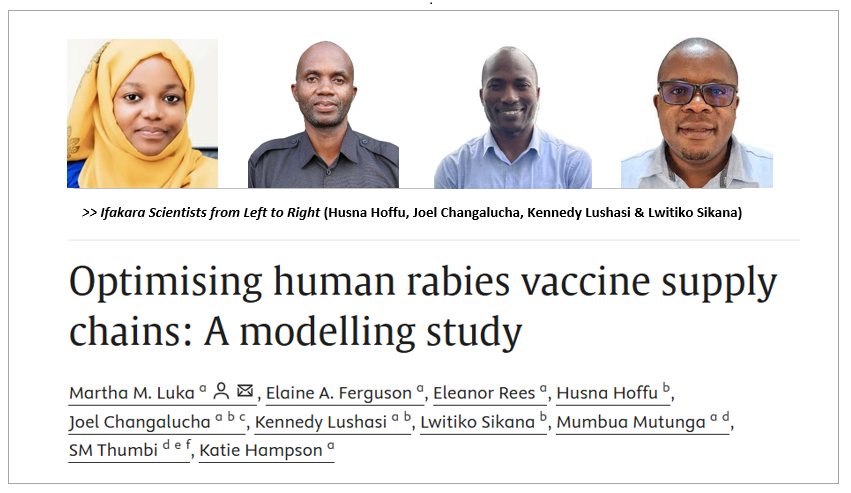
RABIES: Optimizing supply chains for better access to lifesaving vaccines

A new study published on Vaccine presents ways to optimize human rabies vaccine supply chains, particularly in low- and middle-income countries where the disease remains a major threat. Although rabies can be prevented with vaccines, about 59,000 people still die from it every year because they cannot access treatment in time.
Study focus: Insights from Tanzania and Kenya
Using data from Tanzania and Kenya, the study explored how vaccine supply systems could be made more efficient. The research comes at a critical moment as Gavi, the Vaccine Alliance, has begun investing in expanding access to rabies vaccines, supporting the global goal of zero human deaths from dog-mediated rabies by 2030.
Expert behind the study
Led by the University of Glasgow, the study was conducted in collaboration with researchers from the Ifakara Health Institute, Sokoine University of Agriculture (SUA), University of Nairobi, University of Edinburgh, and Washington State University. Contributors from Ifakara include Husna Hoffu, Joel Changaluchaa, Kennedy Lushasi, and Lwitiko Sikana.
The challenge: Effective vaccines, poor access
"Despite the availability of highly effective vaccines, many lives are lost simply because people cannot access treatment in time," the researchers noted. "Post-exposure prophylaxis (PEP)— which includes a series of vaccinations given after a bite—can prevent the disease if administered on time. However, supply chain issues, including frequent stockouts, high costs, and long travel distances to reach clinics, prevent many from receiving timely care," they added.
The solutions: Smarter vaccine use, better stock management
The team evaluated how adopting the World Health Organization’s (WHO) new vaccination guidelines could improve efficiency and help to reduce the occurrence of stockouts, when bite victims are unable to find these emergency vaccines. WHO recommends using less vaccine per dose, allowing one vial to treat multiple patients.
"Our findings show that this switch could cut overall vaccine use by over 50%, even in rural areas where bite patients present less frequently," the researchers said.
Tailored strategies to decentralize vaccine access
They also assessed vaccine distribution and restocking practices across health facilities in Tanzania and Kenya, underscoring the importance of decentralizing vaccine access. In Tanzania, for example, PEP is primarily available in large hospitals; decentralizing access to smaller, local clinics could dramatically improve timely treatment.
To prevent shortages, the researchers developed setting-specific stock management rules based on patient volumes. They suggested that integrating rabies vaccines into routine immunization programs could significantly improve access.
"We developed simple, setting-specific rules to determine how much stock is needed and when to reorder, which can help health systems respond quickly to spikes in demand," they explained.
What can be done to strengthen rabies prevention?
"Our study provides clear, practical guidance on how to make rabies vaccines more accessible, and more reliably available, especially for people in rural and underserved areas," said Kennedy Lushasi, a research scientist from Ifakara and one of the study’s authors. "By adopting WHO’s vaccination recommendations, improving restocking strategies, and supporting decentralization of PEP services, countries can strengthen their readiness to deliver PEP and save lives."
Supporting global goals for rabies elimination
These strategies are especially timely as Gavi-supported vaccines become more available and demand for PEP rises. The study directly supports the global ‘Zero by 30’ plan to eliminate human rabies deaths by 2030 and helps guide Gavi’s investment in expanding free access to post-exposure prophylaxis in endemic countries.
Read the publication here.
